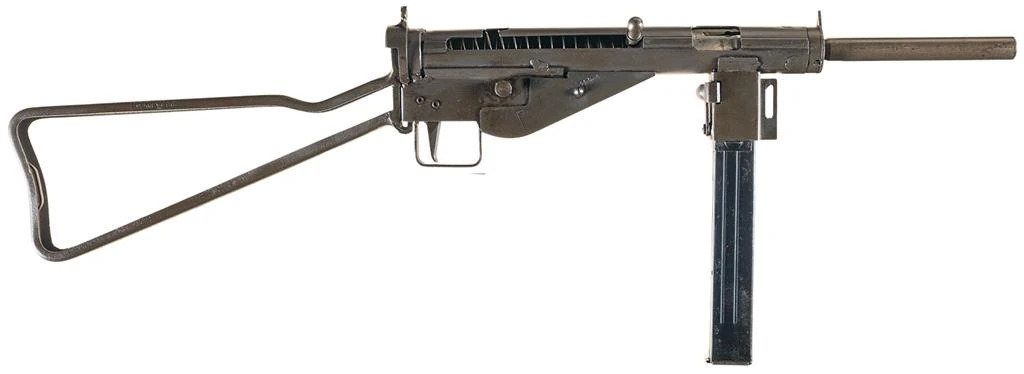It’s January 1945, and you’re a German male in Berlin. Things aren’t looking great. That mini-mustached monster is seemingly insane, and now boys and old men are being conscripted into something called the Volkssturm. You know the war isn’t going well because you’re 60 years old and being conscripted into this Nazi-led militia. At least you can feel confident in the weapon you’ll be issued. The German people make wonderful weapons, the best in the world, in your opinion. Then suddenly, you’re handed a sheet metal monstrosity that’s crude and ugly with the name MP 3008 stamped into it.
The MP 3008 – A Last Ditch SMG
The German MP 3008 in the hands of a 60-year-old conscript was a clear sign the war wasn’t going to end in favor of the Germans. The German weaponry of World War 2 was often known for its high quality. The MP 40 is probably the best submachine gun of World War 2, the Kar98k is a robust and accurate battle rifle, and the MG 34/42 started the genre of general-purpose machine guns. The MP 3008 was simply the German version of a British Sten gun.
The Brits were forced into the Sten gun because, between World War 1 and World War 2, they didn’t need submachine guns until they suddenly needed them. They were caught off guard. The Germans adopted the MP 3008 and overall Sten gun design because they were losing the war, and this was a last-ditch effort to quickly arm forces like the Volkssturm.
Germans were exposed to the Sten gun throughout the war. Sure, British forces fired it at them, but the Brits also dumped the gun into resistance forces. When you dump guns into resistance forces via plane, boat, and smugglers, some are going to fall into the hands of your enemy. The Germans were familiar with the design in more ways than one.

As the fronts began closing in on Berlin, the Germans needed more guns than they could produce. The fantastic MP 40 was a labor and part-intensive submachine gun, and the Soviets captured the Erma plan that produced MP 40s. This caused the German military and government to seek an alternative, much cheaper, faster option to arm their failing military.
Enter the MP 3008
Mauser pitched the Sten gun, and Ludwig Vorgrimler made some changes to the design. They simplified an already super simple gun. The Sten gun made sense. Germans had already been capturing Sten guns and sending them to German forces. Germany also ordered direct clones of the Sten gun in 1944, so Mauser was set up for the construction of the gun. Ludwig’s design could be produced in one man-hour. Mauser got a contract for one million MP 3008s.

The magazine placement was the main difference between the Sten gun and the MP 3008. The magazine didn’t jut out to the side; instead, it sat below the gun’s barrel. The Germans also removed the shroud from around the barrel. They thought the magazine well would be the place to grip the gun, and the shroud wasn’t necessary. There was some effort to simplify the trigger, but that was it as far as changes go.

Mauser sent the technical package to numerous German firms to produce the gun. Production was decentralized, creating several variants with small feature differences. Some models were produced with wood stocks and others with pistol grips, but the variant chosen for mass production featured a simple wire-like stock.
Most use a right-side charging handle, but some were produced with a left-side charging handle. The gun used the MP 40 magazine, also a design feature of the Sten.
The End of the German Sten
The simple blowback-operated open bolt selective-fire gun was to be produced in massive quantities. However, it’s unlikely that many were made or issued. The war ended in May 1945 before the MP 3008 could get off the ground, and it’s likely only a few thousand were ever made. Most of the guns were sent to the Czechoslovak Army after the war, and they are quite rare these days. There are a few in the United States that are transferable, but I can imagine you’ll spend a lot more on one than the German military did in 1945.
Read the full article here










